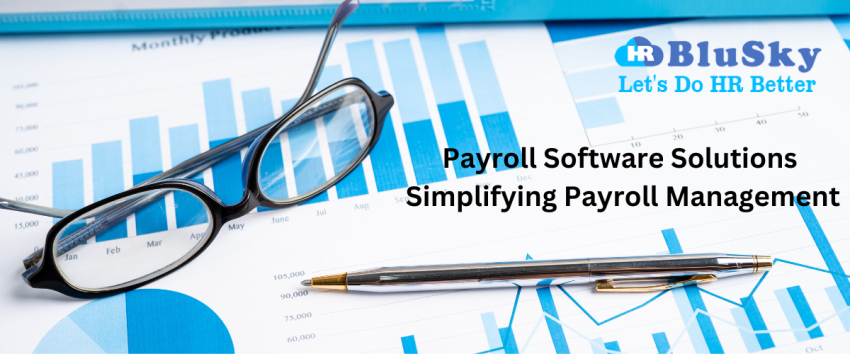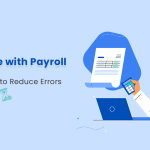Automating Payroll Tasks for Greater Efficiency
Automating payroll tasks for greater efficiency is essential in today’s competitive business environment. By using payroll software, businesses can automate time-consuming tasks such as calculating wages, deductions, and taxes. Additionally, the system generates paychecks and reports without the need for manual intervention. As a result, payroll processes are completed faster, allowing HR teams to focus on higher-level strategic initiatives. Furthermore, automation minimizes human error, which directly improves the overall accuracy of payroll management.
Reducing Human Error Through Digital Solutions
Reducing human error through digital solutions is one of the most significant advantages of adopting payroll software. In traditional payroll processes, mistakes are common due to manual data entry, miscalculations, or oversight. With payroll software, these risks are greatly reduced, as calculations and entries are automated. Moreover, the software flags any discrepancies before payroll is finalized, allowing HR to address potential issues promptly. Consequently, businesses can rely on accurate payroll data that builds trust and satisfaction among employees.
Centralizing Payroll Data for Better Accessibility
Centralizing payroll data for better accessibility is crucial for efficient payroll management. With payroll software, all employee records, payroll history, and tax information are stored in one centralized platform. As a result, HR managers can access important data instantly, without having to sift through physical files or disparate systems. Furthermore, employees can also access their payroll information through self-service portals, making the process more transparent and efficient.
Providing Real-Time Insights into Payroll Data
Providing real-time insights into payroll data is a game-changer for businesses looking to optimize their workforce management strategies. With payroll software, organizations gain access to real-time reports and analytics that detail labor costs, overtime hours, and other payroll-related data. Additionally, these insights allow businesses to make informed decisions regarding staffing and budgeting. In turn, this enhances overall financial planning and operational efficiency.
Supporting Business Growth Through Scalable Solutions
Supporting business growth through scalable solutions is another key benefit of payroll software. As companies expand, managing payroll for a growing workforce can become increasingly complex. However, payroll software solutions are designed to scale with the business, effortlessly handling larger volumes of employee data and payroll transactions. Furthermore, the system can accommodate new locations, departments, or roles without any disruption to payroll processes. Thus, payroll software grows alongside the business, ensuring continued efficiency.
Simplifying Tax Filing and Reporting
Simplifying tax filing and reporting is a critical task made easier by payroll software. With automated tax calculations and form generation, payroll software eliminates the complexity of manual tax filing. Additionally, the software ensures that all reports are submitted on time, reducing the risk of late penalties. Moreover, the system automatically updates to reflect new tax laws, ensuring that businesses remain compliant at all times.
Enhancing Security of Payroll Information
Enhancing the security of payroll information is paramount in today’s digital landscape. Payroll software ensures that sensitive employee data, such as salaries and bank account information, are stored securely through encryption and multi-factor authentication. Furthermore, the software restricts access to authorized personnel only, significantly reducing the risk of data breaches or fraud. Consequently, businesses can protect their employees’ personal information while maintaining compliance with data privacy regulations.
Increasing Transparency with Employee Self-Service
Increasing transparency with employee self-service options is an effective way to improve the payroll experience. Payroll software provides self-service portals where employees can view their pay stubs, request time off, and access tax documents at their convenience. Moreover, this level of transparency reduces the need for HR to respond to individual payroll inquiries. As a result, employees feel empowered, and HR teams can focus on more critical tasks.
Reducing Payroll Processing Costs
Reducing payroll processing costs is a significant advantage that businesses can achieve with payroll software. By automating manual tasks, payroll software eliminates the need for multiple payroll administrators, reducing labor costs. In addition, the system minimizes costly errors that can arise from manual payroll processes, such as overpayments or incorrect tax filings. Ultimately, these cost savings contribute to a more efficient and financially sound payroll operation.
Improving Payroll Accuracy with Automated Calculations
Improving payroll accuracy with automated calculations is essential for businesses aiming to maintain employee trust and satisfaction. Payroll software performs complex calculations, including overtime, bonuses, and deductions, with precision. By automating these calculations, businesses significantly reduce the margin for error, ensuring that employees are paid accurately and on time. In turn, this accuracy builds trust with employees, as they can rely on receiving their correct wages without discrepancies.
Adapting to Remote Workforces with Cloud-Based Solutions
Adapting to remote workforces with cloud-based solutions is becoming increasingly important in today’s flexible working environments. Cloud-based payroll software allows HR teams and employees to access payroll information from anywhere, whether working remotely or on-site. Moreover, this flexibility ensures that payroll processes remain uninterrupted, even if employees are geographically dispersed. As a result, businesses can maintain smooth payroll operations, regardless of where their workforce is located.
Driving Efficiency in Multi-Location Businesses
Driving efficiency in multi-location businesses is another benefit of payroll software. For organizations with several branches or locations, managing payroll across different sites can be a logistical challenge. However, payroll software centralizes the payroll process, ensuring that all locations follow consistent procedures. Additionally, the software can handle different tax laws or regulations in various regions, allowing businesses to maintain compliance across multiple jurisdictions. Thus, payroll software simplifies complex payroll operations for multi-location enterprises.









